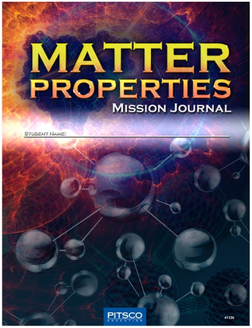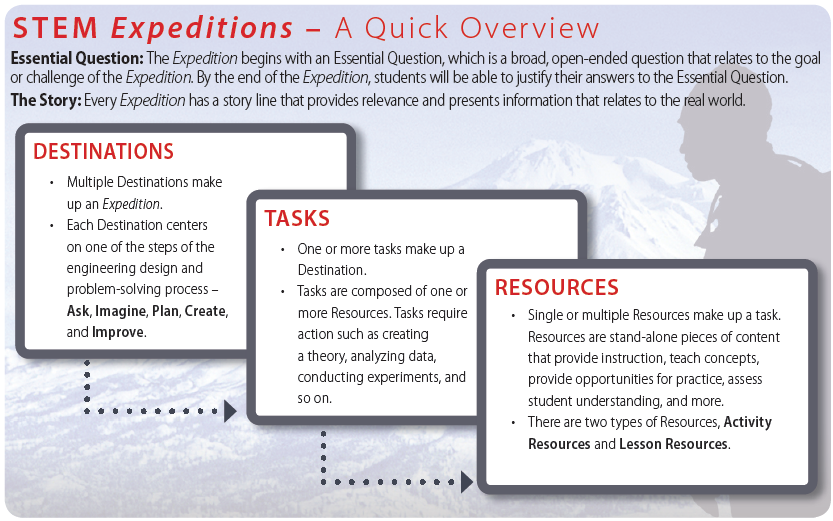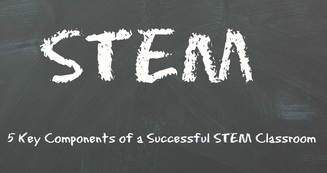 At Pitsco, they have always understood that the teachers are the experts. Classroom teachers are their greatest resource as they develop and refine curriculum. They use professional development site visits, surveys and forums to determine what is working well in the classroom, and what they could improve upon. When asked, Missions teachers responded with feedback. And Pitsco listened…. And developed Missions 2.0, which will be launched in 2017. When updating, Pitsco focused on three areas of improvement:
Are you ready to add STEM to your Elementary curriculum? Contact Moss to learn more about Missions from Pitsco.
0 Comments
Pitsco's latest curriculum, Expeditions, is creating a lot of positive buzz in STEM circles: the curriculum is more flexible, more rigorous, and better aligns to state and national science standards. The ITC (In the Cloud) classroom management system allows for immediate updates. The curriculum is more flexible than modules -- teachers can choose to implement as a rotational or whole class solution (or a combination of both!) The excitement is palpable -- people are excited to see this curriculum for themselves, and understand how it will best fit into their classrooms. This video shows a sample lesson of Engineering Rockets, and guides the user through a short introduction. What did you think? Keep asking questions -- at Moss, we're excited that YOU are excited. We want to help you understand this new curriculum, and how it can improve your district's STEM outcomes.
What more information? Check out this blog post (with FAQs). And contact your Education Specialist for more information -- we're here to help! Hands-on activities are important for every class, but paramount for science classes. The biggest challenge teachers have in incorporating class activities is the amount of set up time it takes to prepare for class. Labs can take up to 90 minutes – each day – to set up, which is costly for teachers.
Labdisc makes it possible to incorporate hands-on instruction while saving teachers in set up time without sacrificing quality instruction. The Labdisc is the only all-in-one wireless laboratory which teachers can apply in instruction. An all-in-one science lab in the palm of your hand, Labdisc is an important classroom tool:
Labdisc can integrate technology into science class with this affordable solution, and replaces science-class consumables with one easy-to-use tool.  [Adapted from Pitsco Education’s Community Blog] Pitsco knows that adaptation is essential. The classroom has been changing, and Pitsco is changing with it. For the past several years, we’ve noticed a trend toward more flexible curriculum and environments. With the availability of open resources and easier access to collaboration, educators have more control over how they’ll deliver material and which pieces they would like to use. And we would like to help. We’ve embraced the changes as an opportunity to reconfigure our Modules curriculum to meet the varying needs of educators, and we will soon be releasing it under the name of STEM Expeditions. We’ve built it from the ground up based on Common Core State Standards. However, it’s also flexible enough to fit well with any standards your state might be using. Other standards we considered while writing this curriculum include ITEEA and NGSS. STEM Expeditions will be cloud based and incorporate STEM concepts into relevant, real-world activities. Each Expedition will begin with an Essential Question, which sets the focus and shapes students’ thinking. Career connections have always been an important part of our curriculum, and we will continue to weave those in. Students will work together to complete the activities. Collaboration and teamwork will be key. STEM Expeditions takes an integrated approach to education. Students are learning several different subjects at the same time and finding out why it matters. For example, in STEM Expeditions, they might be working through a hands-on science activity and can’t move forward without applying math in many forms. We’ve observed how well the integration works in our beta test sites, such as when students have to measure distances and work practical conversions. They might have learned this skill in an earlier grade, but without context conversions, it can be quickly forgotten. STEM Expeditions give students a reason to use concepts learned in other content areas again. If you’ve used our Modules titles, STEM Expeditions will be very familiar to you. We’ve simply updated them with today’s educator in mind. You could say we adapted. You’ll be able to use STEM Expeditions rotationally or whole class. We believe the curriculum we’ve created will be easier to tie into things that you are experiencing locally. I think your students will reach a deeper level of learning and that you’ll find it more flexible to suit your needs. Learn more:  STEM classrooms are different – not only in coursework, but in educational outcomes. These classrooms rely less on memorization and more on critical thinking skills. When you visit a STEM classroom it just feels different – more alive, more energized, more like what you would expect. Five Key Components of a Successful STEM Classroom: Engaged Students – when students are engaged, they exhibit a higher level of critical thinking and content is not only memorized, but mastered. Timothy Huneycutt suggests in the National Math + Science Initiative Blog that creating a classroom where students are independently thinking in the classroom is the key to long term success. Project Based Learning – For many students, doing is the key to understanding AND retaining the information. Solid curriculum incorporates all learning styles (visual, auditory and kinesthetic) to address the learning styles of all students. Age Appropriate Curriculum – the building blocks of scientific inquiry are built in elementary classes, and build in middle school, though high school and post-secondary education. The right curriculum challenges students at every level, adding to previously mastered topics. Need an example? Pitsco Education has developed age appropriate curriculum for every age level. Career Focused – it’s never too early to start incorporating the real-world into the classroom. Real world applications will create connections for the student; they will never again need to ask “when will I ever use this in the REAL WORLD?” because every lesson will reinforce that (and make the lesson more tangible to the student). Flexible – high performance STEM classrooms all have classrooms that are designed for discovery and facilitate the lessons. Furniture becomes part of the teaching tool kit. Desks are mobile, table tops double as white boards for doodling and notes. Interior Concepts provides photos of the most popular room designs in this slide deck. What works well in your classroom? What tools and ideas are you excited to incorporate? |
AuthorYou have questions about STEM education? You're not alone! We're here to share ideas and provide thought-provoking commentary. Let us know your thoughts! Sign Up for Email Updates For Email Marketing you can trust. Categories
All
Archives
February 2017
|
- Home
-
K-12
- College
- Industry
- Certifications
-
Partners
- Afinia-3D Printing
- Amatrol-Manufacturing Training Equipment
- Apolo Studios- Welding Simulation
- Bantam Tools - CNC
- CEF-Custom Educational Furniture
- DAC Worldwide-Manufacturing Training Equipment
- Greene Manufacturing Inc - Furniture
- Iconic CNC
- Interior Concepts-Furniture
- MSSC Certifications
- MINDS-i Education
- Pitsco Education-STEM
- SimLog-Heavy Equipment Simulation
- Stokes Robotics
- Techno CNC Systems
- Universal Laser Systems
- VictoryXR - Virtual Reality
- WB Mfg - Furniture
- Funding
- Contact
- About
- Home
-
K-12
- College
- Industry
- Certifications
-
Partners
- Afinia-3D Printing
- Amatrol-Manufacturing Training Equipment
- Apolo Studios- Welding Simulation
- Bantam Tools - CNC
- CEF-Custom Educational Furniture
- DAC Worldwide-Manufacturing Training Equipment
- Greene Manufacturing Inc - Furniture
- Iconic CNC
- Interior Concepts-Furniture
- MSSC Certifications
- MINDS-i Education
- Pitsco Education-STEM
- SimLog-Heavy Equipment Simulation
- Stokes Robotics
- Techno CNC Systems
- Universal Laser Systems
- VictoryXR - Virtual Reality
- WB Mfg - Furniture
- Funding
- Contact
- About

 RSS Feed
RSS Feed
